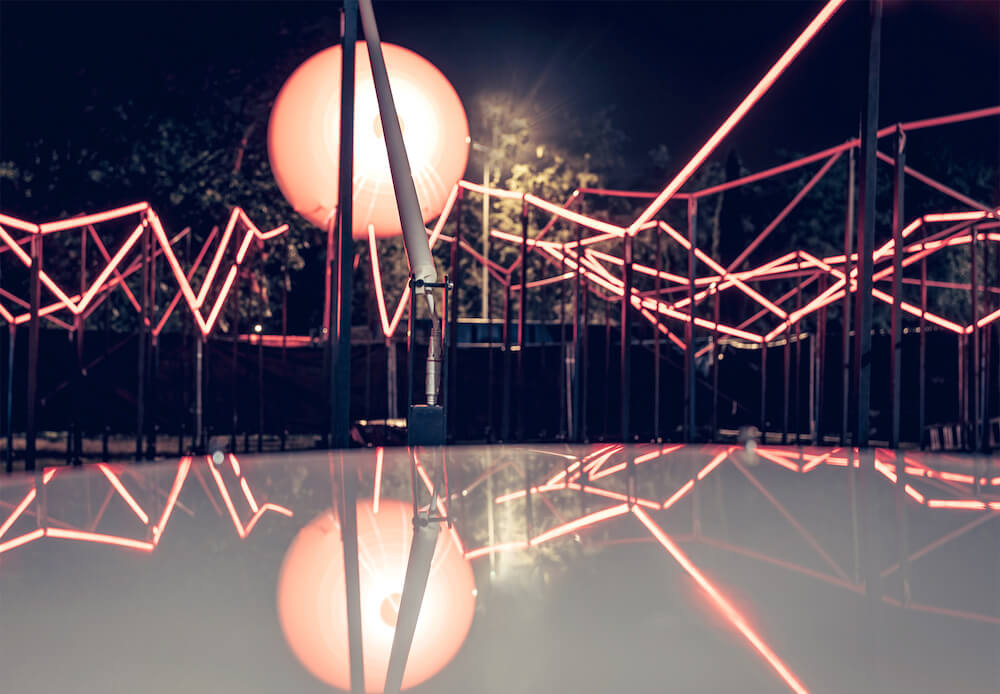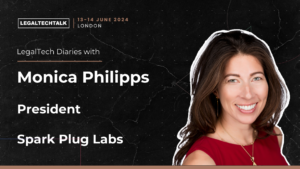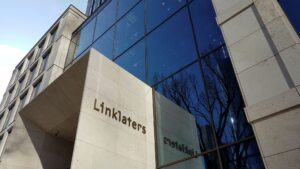From social media to litigation, the world has turned to video as a mainstream vehicle for consuming information in an engaging and quick manner. When it comes to attorneys effectively displaying their evidence and case information in litigation, audiovisual technology has become an important tool. With the increase in remote proceedings, a variety of cutting-edge video technology applications can be leveraged in litigation to create compelling evidence. Technology is constantly evolving – here’s a roundup of some of the most exciting new strategies and tools.
360-Degree Cameras
The most common complaint I hear about remote proceedings is, “I can’t see the whole room in case there is someone coaching the witness.” Of course, there is the simple solution of having the witness turn their camera around the room, but a much more elegant solution is a 360-degree camera. These cameras enable you to see the entire room in a filmstrip view. This means if anyone else is in the room, you will know it! With cutting-edge cameras such as Owl Camera or j5create, the attorney can have a complete view of the witness and their surroundings.
Creating Video Annotations
There are many programs that currently support annotations for transcripts, exhibits, documents, etc., but there is nothing for annotating video. From cellphones to security cameras, video is pervasive and guaranteed to be involved in many cases. This requires more than a simple video player to properly leverage it as evidence. A new beta Video Annotation application has been released demonstrating the effectiveness of video annotating tools. Some features being tested include on-screen annotation tools enabling a user to draw right on the video. This is a useful feature for indicating key parts of the video. Additionally, searchable notes can be added to particular frames or portions of the video. These features can also be employed collaboratively with other users in real time. For instance, this tool could be used to show a remote witness video playback with annotations calling attention to specific portions.
360-Degree Video Site Visits
There may be instances in a case when a particular location must be documented or a large object recorded as evidence. From fire cases to product liability, “site visits” are becoming more common. The traditional way of conducting one is to send a certified legal videographer to record whatever is needed. While this approach is effective, it only gives a static 2D representation. There is no way to see what was “off camera” once it has been captured. Utilizing high-resolution 360-degree cameras, videographers can now capture the entire location or object. After the fact, this footage can be viewed in an interactive 360-degree viewer, enabling you or a witness to move the focal point of the camera simply by dragging the mouse. (Can provide image if needed) This 360-degree footage can also be reedited to show various views at any point. This more comprehensive capture will give more flexibility as the case evolves.
Virtual Reality Site Visits
The above-mentioned footage can also be viewed in virtual reality. This is very much a cutting-edge feature, but something that is available today. Imagine a witness or a juror donning a VR headset to be virtually immersed in the site. They can be placed right in the location and can move around and view it from any angle . . . as if they were there. It has yet to be seen how this technology will actually be employed in cases; however, with capturing jurors’ attention becoming harder every day, it may show up sooner than we think.
Deepfake Detection
With the increase in technological advancements and malicious hackers and scam artists online, deepfake detection will become crucial. Deepfakes are videos of a person in which their face and body are digitally altered so they appear to be someone else. This can be especially important in litigation since witness testimony could be skewed or manipulated by deepfakes. Tools and techniques are being developed to combat this. For deposition video, it is recommended to use a certified legal videographer who will keep an archival copy of the testimony. If later in the case, there are questions as to the authenticity, everything can be compared to the original. This is the most effective method to prevent deepfake testimony. There are many ways being developed to compare two videos, but one of the simplest is the tried-and-true MD5 checksum. Without getting too technical, this is a method that utilizes a cryptographic algorithm to create a specific “fingerprint” for the file. If the two videos are a match, their fingerprints will also be a match. However, if the second video has been altered, even by just one pixel, the fingerprint will be different. There are fast, free ways to do this both in Windows and Mac OS. More techniques are being developed and will work to make spotting deepfakes easier, but in the meantime, ensure you have someone keeping an official archival copy of your deposition video.
Creating Video Clips for Trial
Creating deposition video clips for trial has never been easier and more efficient with the tools that deposition service providers offer. Given that an unedited deposition video alone isn’t helpful, a litigator can use synchronized video to create a compelling case narrative that becomes much more powerful. Synchronized video is the process of linking the transcript text to the video. This enables you to create highlights on the text and automatically generate a video clip. What’s more, these clips can then be exported as individual video files or even a fully built PowerPoint presentation. Synchronized video and the tools to work with it are the only format to deal with when working with video depositions.
Conclusion
AV evidence is a great tool to create an engaging and compelling case narrative that can complement witness testimony and be more easily understood and consumed by a jury. This is a trend to stay on top of as AV evidence is an effective strategy that will continue to evolve as cutting-edge technologies develop.
About the Author
Michael T. Murray is the director of client solutions for Veritext Legal Solutions. Murray stays on top of litigation technology trends and travels throughout the nation speaking and providing informative and entertaining CLEs, educational instruction and product demonstrations to legal professionals.
Source: Law Technology Today








